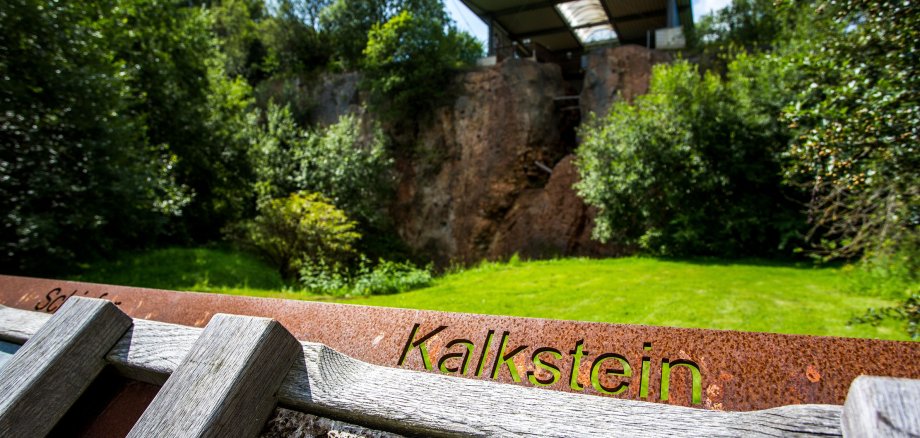Geopark Ruhr Area visits "GrenzWelten" Geopark
Two and a half days of excursions, eight visited highlights in the GrenzWelten Geopark - that is the balance of the visit from the Ruhr Geopark to the Hessian "sister region". For months beforehand, it was unclear whether the long-planned exchange with Corona conditions would be possible. The participants were all the more pleased that the excursion could take place successfully under 3G rules. And GrenzWelten director Kim Peis, who had organised the meeting with her colleague Maximilian Malte Paul, was also relieved. "The exchange with other geoparks is enormously important. Such encounters inspire and motivate everyone involved and we were really pleased to have the Geopark Ruhr visit," said Kim Peis.
22 representatives of the North Rhine-Westphalian Geopark "Ruhrgebiet" took part in the meeting. The small tour began at the Korbach Fissure, one of the most important geotopes in Germany from a palaeontological point of view. Among the guests were not only interested members of the association "GeoPark Ruhrgebiet e.V.", but also experts from the Geological Service of North Rhine-Westphalia. In perfect weather conditions, after a short visit to the scientifically important "Adorfer Klippe", the tour continued to the Kilianstollen visitor mine in the Hochsauerland Geopark region. There, the participants were able to marvel at the colourful copper ores of the oldest mine in the Geopark at a constant 10°C and 100 percent humidity.
The next stop on the two-and-a-half-day excursion was the "Schöne Aussicht" between Vöhl-Basdorf and the Scheid peninsula on Lake Edersee, where forest expert and former head of the Geopark Norbert Panek reported exciting details about the Kellerwald, the National Park and World Natural Heritage Site and the beech forests. Afterwards, the guests from the Ruhr Geopark could go in search of the "Frankenberg grain ear" in the Hohenäcker quarry, an important fossil site from the Permian period.
At the Eisenberg gold mine near Goldhausen, the excursion participants then got an insight into one of the richest gold deposits in Europe. From there they went to Brilon in the Hochsauerland district - a geological leap into the Cretaceous period. A guided tour of the Haus Hövener museum focused on the iguanodon dinosaur; its remains were found in Brilon-Nehden. The tour ended with the famous Bruchhauser stones in Olsberg-Bruchhausen, which were already known to the visitors as remains of Devonian volcanism. New for everyone, however, were the interesting archaeological details prepared by Nancy Schumacher, scientific assistant and archaeologist of the Geopark Ruhrgebiet.
This marked the end of a thoroughly successful weekend at GrenzWelten, for which the guests thanked Kim Peis and Maximilian Malte Paul. Anyone interested in a guided tour or excursion in the GrenzWelten Geopark can get more information at www.geopark-grenzwelten.de or directly from the project office by calling 05631 954-512 or emailing geopark@lkwafkb.de.
